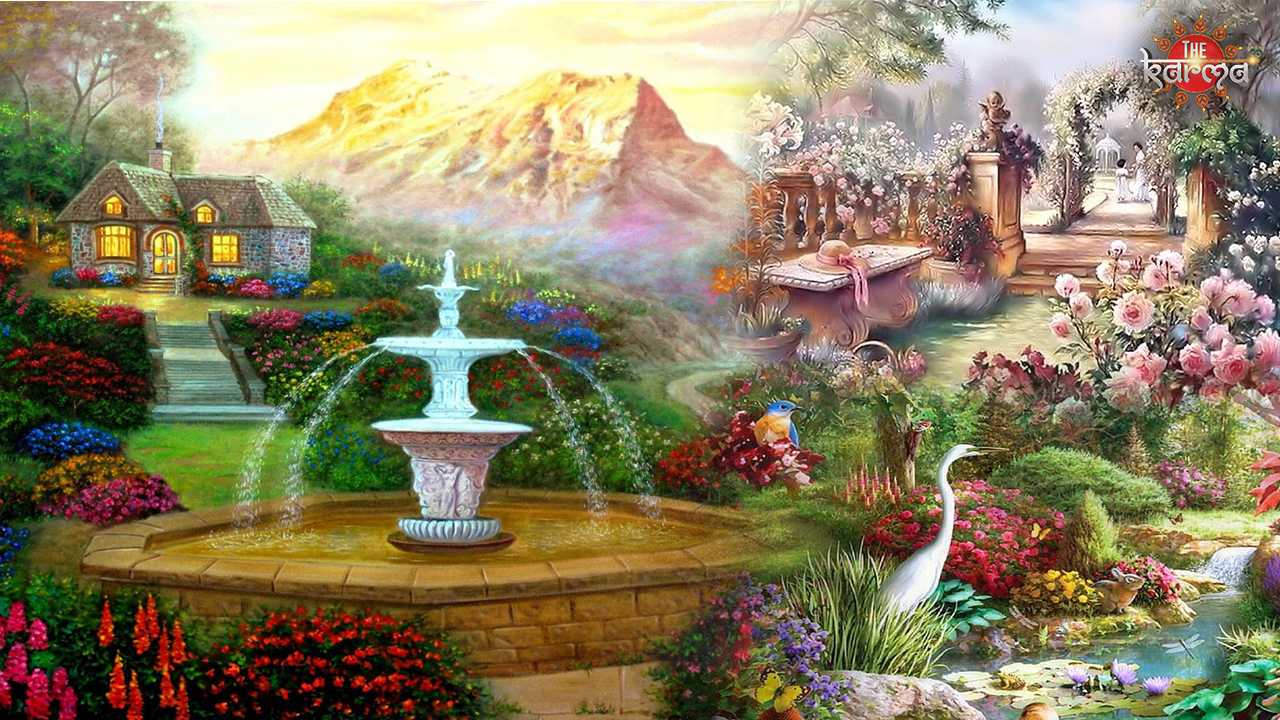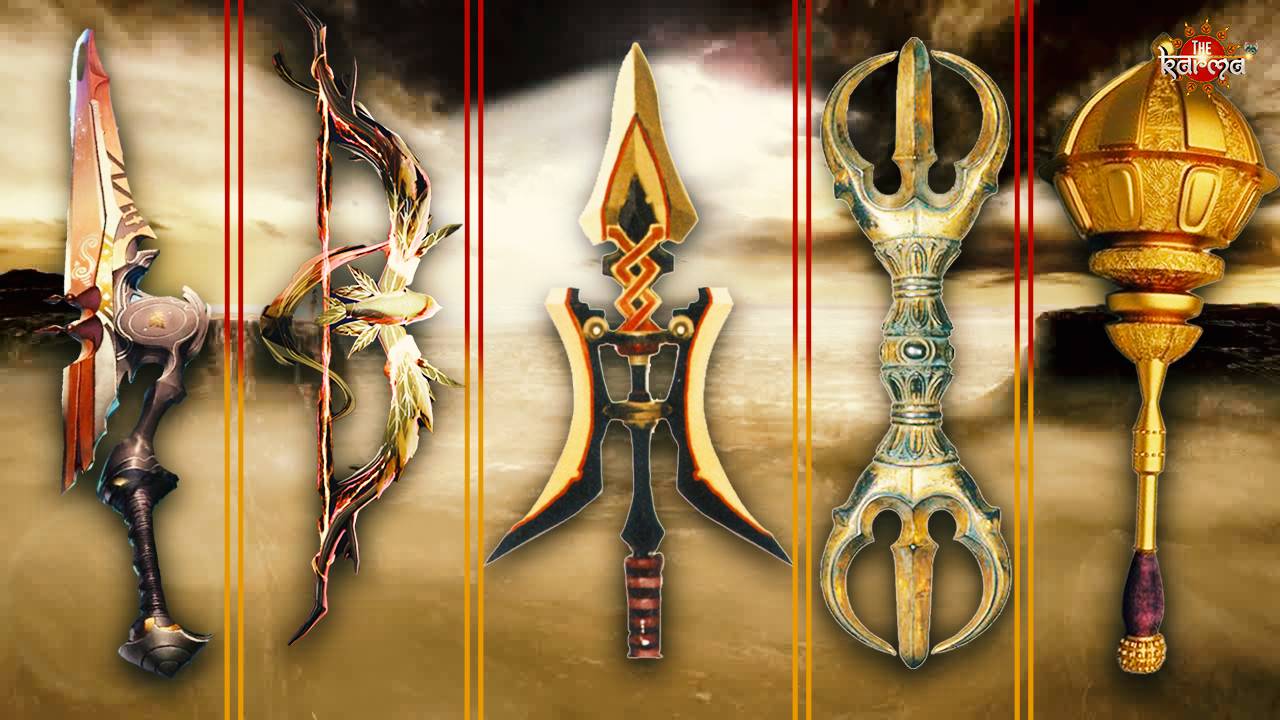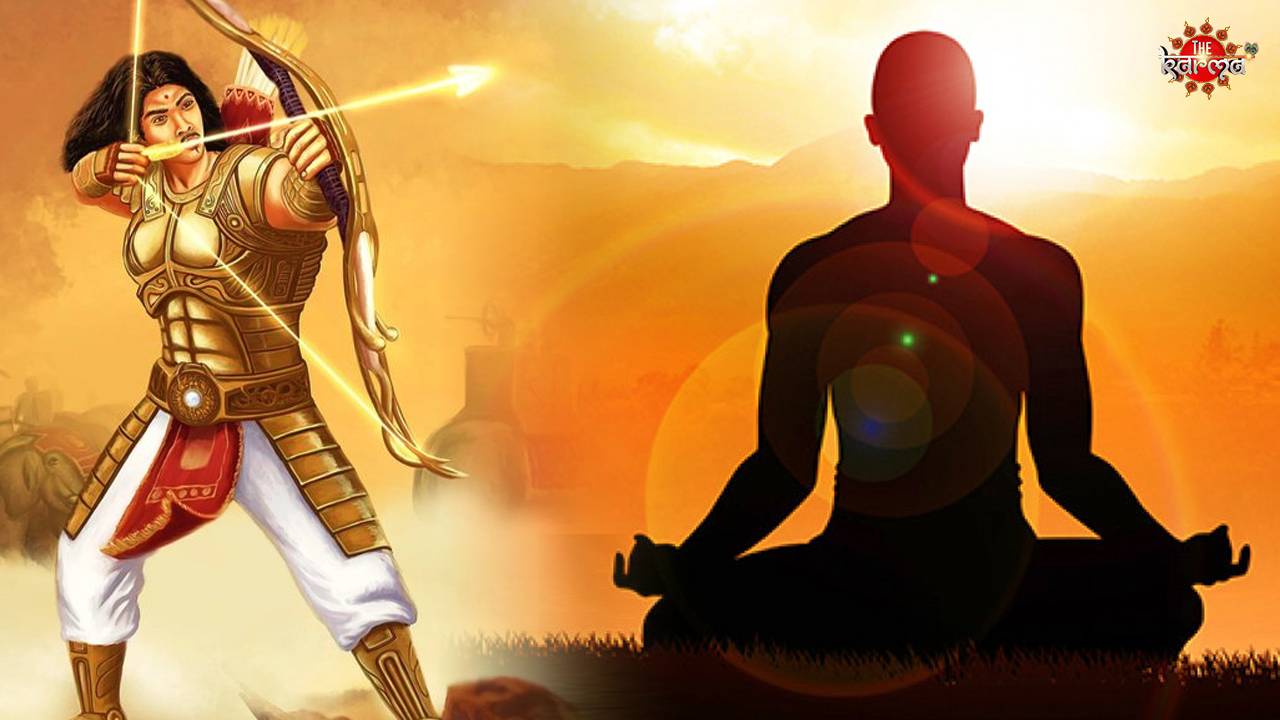Gardens of Hindu Gods
Gardens of Hindu Gods
Friends, do you enjoy gardening? Have you made a kitchen garden on the balcony of your house? In fact, all humans like to see greenery and birds around them. You must have heard the name, Garden of Eden, in the Bible. This is the Garden that is located in Heaven, where Adam and Eve lived. But in Sanatan Hinduism, all the worlds and deities have their own huge gardens. Not one, but thousands of divine gardens have been described in Sanatan Hindu scriptures. Today, The Karma is taking you on a tour of the Gardens of the Gods, which will amaze you.
First of all, let’s take you to Vaikunth, the abode of Bhagwan Vishnu. Bhagwan Vishnu resides in Vaikunth with Maa Lakshmi. Thousands of divine councilors live with him. Bhagwan Vishnu has his own garden in Vaikunth which is called Nai:Shreyas Van. This garden of Vaikunth is mentioned in Adhyay 15 of the third Skandh of Shrimad Bhagwat. The specialty of the trees planted in Nai: Shreyas Van is that they give whatever is asked of them and fulfil all their wishes. Autumn never comes in this forest and it is always green. Birds like the divine pigeons, peacocks, pheasants, and swans living in the Nai: Shreyas forest always sing the praises of Bhagwan Vishnu. The number of Tulsi plants is more here. Apart from these, there are lotuses that bloom at night, lotuses that bloom during the day, and many different flowering plants.
Now after Bhagwan Vishnu’s Vaikunth let us move towards Indra’s heaven. You must have heard about the comforts and facilities found in heaven… but here too, there is a divine garden called Nandanvan. There is a tree named Kalpavriksha in this garden. This Kalpavriksha emerged from the Samudramanthan and was kept in the Nandanvan of heaven. The specialty of this Kalpavriksha is that it can give you whatever you ask for. Apart from this, there is also a Parijat tree in Nandanvan which is a divine tree. Its flowers always remain fresh and any woman, who puts Parijat flowers in her hair or wears its garland, never becomes a widow. Apart from these divine trees, there are many flowering trees and fruit trees in Nandanvan that always give fruits and flowers. Here too, the autumn never comes.
Now let us discuss the gardens of Bhagwan Shiv and Maa Parvati. According to the Harivamsha Puran and the Mahabharat, there are at least two gardens of Bhagwan Shiv and Maa Parvati where the two roam together and enjoy flowers and fruits. According to Harivansh Puran, when Indra refused to give his Parijat tree to Bhagwan Shankar, a separate garden of Parijat trees was made for Maa Parvati by Bholenath. This garden is near Mandarachal Mountain. This garden shines with the glory of Bhagwan Shiv even in the dark of the night. There is no effect of the weather in this garden. Summer or winter season arrives in this garden only by the wish of Maa Parvati. No one can enter this garden, except Maa Parvati, Bhagwan Shiv, their Ganas, and Narad Ji. Once when a demon, Andhak, tried to enter this garden, Bhagwan Shiv killed him.
In chapter 6 of Bhishma Parva of Mahabharat, there is a mention of another garden of Bhagwan Shiv and Maa Parvati. It is situated in the north of Sumeru mountain. There are only the trees of the Kaner flower in this forest. Here, surrounded by divine ghosts, Bhagwan Shiv walks with Maa Parvati in person, wearing a divine garland of Kaner hanging to his feet. No one else can enter this garden and there is ‘no entry’ for everyone.
Apart from the garden of Bhagwan Shiv and Maa Parvati, their beloved son Kartikey also has a garden of his own called Saravan Van. This Saravan Van has been repeatedly discussed in Mahabharat and Ramayan. When Ravan traveled to Kailash to challenge Bhagwan Shiva, Nandi Maharaj stopped Ravan and said that he could not go further because beyond it was the Saravan Van of Bhagwan Kartikey where he used to roam. Saravan means reed. Bhagwan Kartikey was also born in the Saravan Van, or among reeds, hence one of his names is Saravan.
Now we are taking you to Alkapuri, the capital of Bhagwan Shiv’s friend and his devotee Kuber. Kuber is the god of wealth. Apart from this, Kuber is also the king of demons, Gandharvas, ghouls, and Apsaras. His abode is near Kailash further to Gandhamadan mountain. In fact, Kuber is the king of Kailas; Bhagwan Shiv only resides there. There is Chaitrarath forest on Mandar mountain near Kailash. This garden of Kuber has been described in many Puranas along with Valmiki Ramayan and Mahabharat.
There are many lakes in this garden. There are many types of trees laden with flowers and fruits in this garden. Apsaras dance in the Chaitraratha Van and Gandharvas sing songs.
Hanuman Ji also has his own garden near the gardens of Bhagwan Shiv and Kuber. This is called Kadali Van. Kadali Van means a banana garden. The description of this garden of Hanuman Ji is found in Mahabharat as well as many other texts. Apart from Bananas, Hanuman Ji gets all kinds of fruits and food here through the boon of Maa Sita. Divya Gandharvs come here and narrate Ramkatha daily to Hanuman Ji.
Talking about Hanuman Ji, one cannot remember Prabhu Shriram… Let us take you to Prabhu Shriram’s garden. In Sarg 42 of the Uttarakhand of Valmiki Ramayan, Shri Ram takes Maa Sita to his Ashokavanika Garden in Ayodhya where both of them roam around happily. There were numerous trees of sandalwood, mango, and coconut in the Ashokvanika Garden of Ayodhya. Apart from this, many trees like Champa, Mahua, and thousands of such flowering trees were planted there. Many birds like cuckoos, parrots, mynas, papihas, swans, and peacocks lived in this garden of Shriram and Maa Janaki. There was also a lake like a swimming pool in this garden. Lotus flowers bloomed in this lake and many gems and jewels were studded on the steps of this pond.
When you talk of Prabhu Shri Ram, there will be a mention of Ravan as well. Ravan, the king of Golden Lanka, also had a big garden named Ashok Vatika. Maa Janaki was imprisoned in this Ashok Vatika itself. The mention of this Ashok Vatika is found in Valmiki Ramayan and all the Ram stories. According to Sundarkand of Valmiki Ramayan, when Hanuman Ji visits Ashok Vatika, he sees many fruit and flower trees there. There were many mango trees here. Apart from this, many trees here were golden and silver colored. There were many other trees in this Ashok Vatika, on which peacocks, parrots, and cuckoos sat and sang sweetly. In this garden, Hanuman Ji had seen Maa Janaki sitting under the Ashok tree.
This is the story of Prabhu Ram’s and Ravan’s gardens, in his time. Now let us find out about the Gardens of Bhagwan Krishna. No one has been a bigger lover of nature than Bhagwan Krishna to date. Since childhood, he used to go to the forests to graze cows, hence he was very fond of trees and plants as well. Nidhivan was built by Bhagwan Krishna in Vrindavan, where Shri Krishna roams with Radha Rani at night even today.
When Shri Krishna became the king of Dwarika, he ordered Bhagwan Vishwakarma to build the city of Dwarika. Vishwakarma had built many gardens in Dwarka along with the palaces of Bhagwan Krishna. Among these gardens, Rudraksha Van, Bhanu Van, Chaitraratha Van, Chitrak Van, Panchvarna Van, Paanchjanya Van, Nandan Van, Raman Van, and Mandar Van are the prominent ones. Bhagwan Shri Krishna used to spend time with his wives in these gardens.
This is a story of beautiful gardens. Now let us go to a garden where no one wants to go. This garden belongs to Yamraj. Yamlok Puri has a garden called Asit Patrak. The leaves of the trees of this garden are sharp like swords. The Yamdoots place evil souls, who are to be given the tortures of hell, on these leaves. As soon as they are kept on these leaves, the bodies of the evil spirits start falling apart. These evil spirits cry a lot from this torture.





